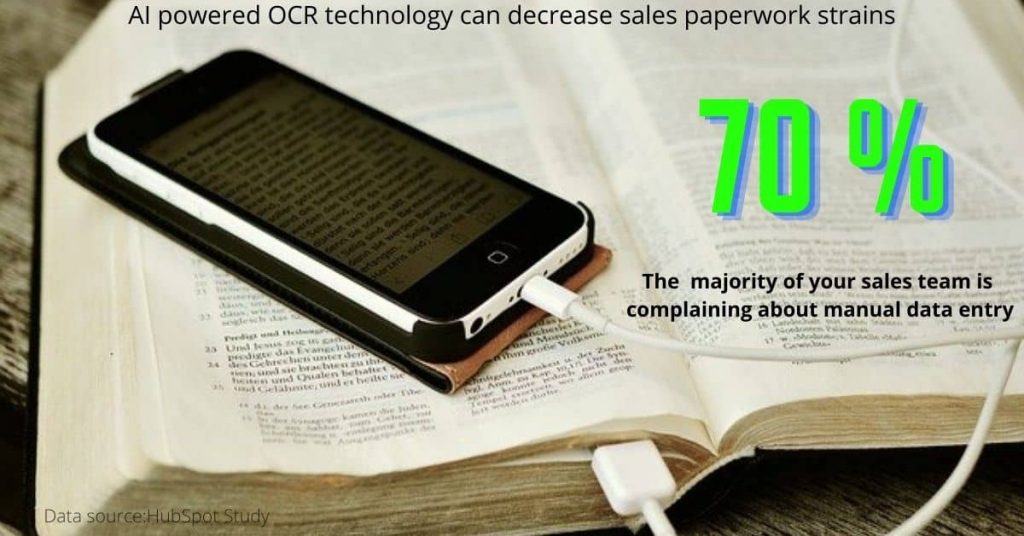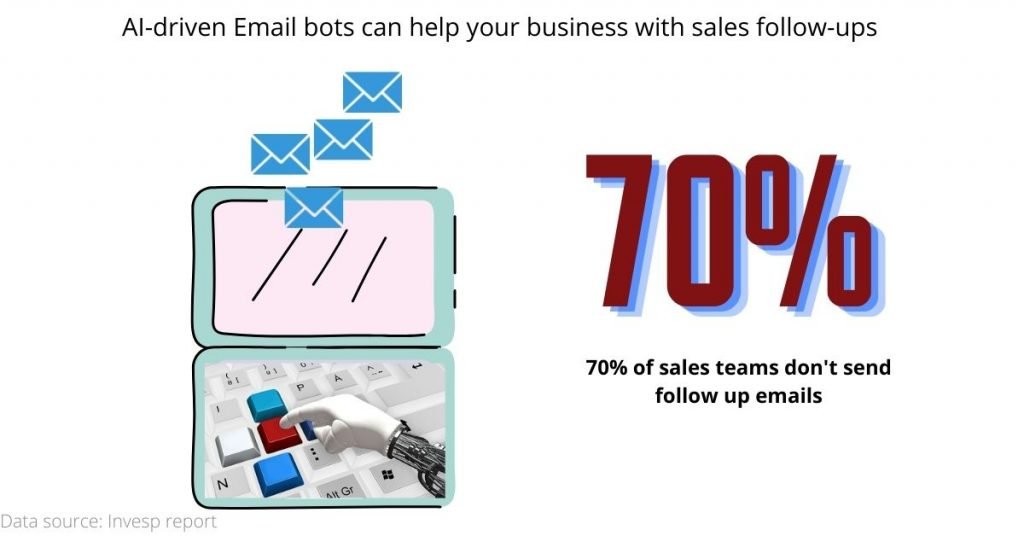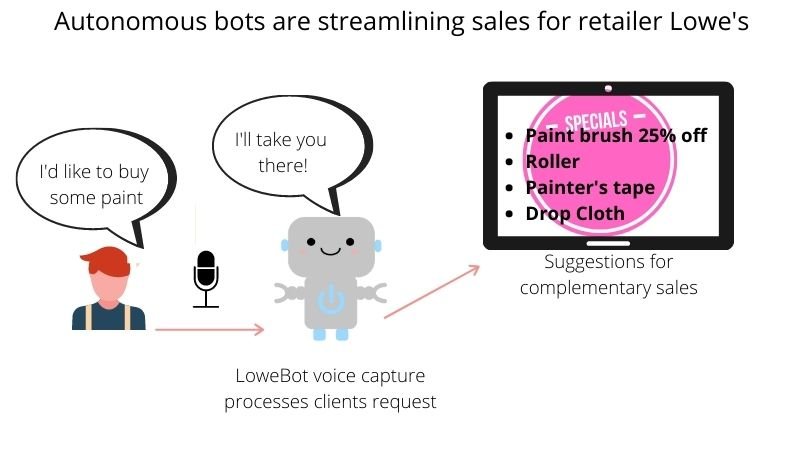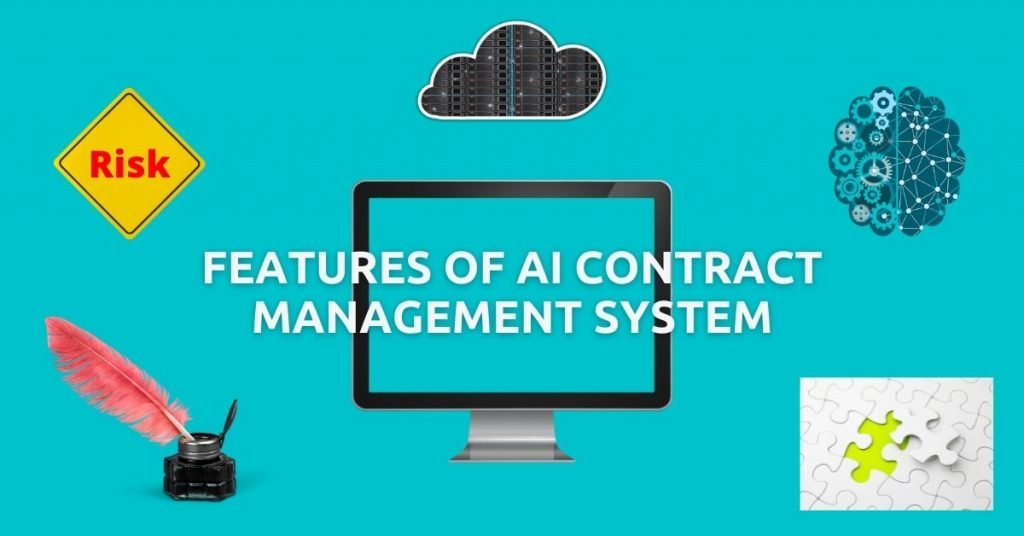Can artificial intelligence practically benefit your sales and prospecting strategies?
Prospecting is one of the most important aspects of running a business. For, without new business lifelines, companies will be headed to the deathbed because of gradual attrition.
According to a Brevet Study, businesses incur a client base loss of up to 30% every year as customer activity naturally dwindles over time.
So what does that mean for your business?
It means that your prospecting workflows should always be working, and doing so as effectively as they can get. Additionally, it also means that current clients should not be forgotten in your overall marketing strategy as well.
In order to achieve these goals, artificial intelligence powered tools can inject new dimensions into sales and prospecting strategies. The result is high-potential lead generation with lower sales expenses.
In this article, we’ll be talking about some of the common uses of artificial intelligence for sales and prospecting, complete with real-life examples of AI sales software in action.
Let’s get started:
1. Demand Forecasting
What strategies does your business have in place to predict how customer demand will look like in, say, three months from now?
As a leader at the top of a typical sales process, it may be part of the job to analyze large stacks of data to establish customer trends and buying patterns. Alternatively, you rely on ARIMA or some other conventional forecasting system.
However, manual or traditional demand forecasting involves a lot of time-consuming work, which may have been well-spent generating actual sales opportunities.
With AI-powered demand forecasting, you can reduce forecasting inaccuracies by up to 50%, according to a Mckinsey Digital study.

Consequently, the number of sales lost due to errors in large data analysis that lead to out-of-stock scenarios also reduces.
Where traditional AI models like ARIMA only consider historical data, machine learning forecasting tools factor in real-time data as it unfolds in the market.
This real-time data filter encompasses ever-changing everyday aspects like
- Social media
- Online reviews
- And weather
By putting AI-powered demand forecasting software to good use, companies like Electric Utility have cut down on millions in inventory
What’s more, AI data tools have proved useful even in ventures where data may be scanty. ML software can still learn and make accurate forecasting based on the past performance of products with similar features.
2. Client Onboarding
Did you know that most sales teams are not big fans of repetitive chores like manual data entry?
A HubSpot study states that over 70% of salespeople say that data entry takes up a lot of time.
As a result, your sales team spends a lot of work hours on manual onboarding processes that cut into opportunities that can be channeled into prospecting.
Using AI-powered OCR technology is one way to automate data entry chores and increase the sales team’s productivity.

Via AI-driven OCR scanning software, sales teams can upload handwritten, printed, or even image-based documents into a shared system.
If you’d like to know more about how technologies like OCR software are possible, this article on machine learning gives you a quick walkthrough on learning the basics of ML. You’ll get in-depth insights on what resources to use, and what fundamental knowledge you need to fully understand ML and its applications in business.
ML OCR software enables client profiling to go paperless in seconds and, when set up within a cloud network, allows information to be distributed across the company’s branches.
Companies such as fast-food chain Nando’s are using AI-powered OCR technology for contract analysis.
Pages of data pass through the software, and important information is highlighted in a digital format for further analysis and decision making.
3. Email Chatbots
It takes more than one attempt of persuasion to convert leads. If you’ve been in the business long enough, you know this all too well.
However, your sales team may not know that, because a report by Invesp established that 70% of salespeople don’t send follow-up emails.
If many leads have not been leading to anything substantial, it may be because sales reps are giving up after only one email. Yet, it takes the average client at least three attempts before saying yes.
That’s where AI-powered email chatbots come in. These handy virtual assistants can send follow-up emails to swing uncertain prospects to the right side of the fence.

When prospects email to ask about prices, the bot can fetch a price list for the client or inquire for more details to process the request if need be.
Through Machine Learning and natural language processing, AI-powered email bots can understand basic human language and decipher phrases to fetch responses from a dataset.
AI-driven email bots can book sit-downs with sales personnel, qualify leads and reignite abandoned email conversations.
Tech leader, Drift, has helped companies scale up sales processes with NLP email bots.
Additionally, these email bots also generate conversational sales content to pick interest in clients, thereby killing two birds with one stone.
4. Sale Handling
If you have a large brick-and-mortar location where clients often physically walk in to look around for what they need, AI-powered sales robots can ease the burden on human employees.
AI-driven in-store retail robots assist businesses by ushering clients to products in large stores. They also keep an eye on inventory levels to avoid missed sale opportunities from products running out of stock.
In 2016, Fellow Robotics and Lowe came together to create the LoweBot.
This autonomous robot receives clients at store entrances by detecting human presence through computer vision, and specifically a 3-D scanner.

Using natural language processing, this sophisticated robot listens to client’s voice requests. It then leads the way to items of interest or those that might be of interest in case a client isn’t overly sure of an exact need. The robot finds the requested or suggested items via smart laser sensors.
But there’s more.
Via a second screen, the LoweBot can also show special offers as it passes through locations in the store containing the discounted items.
If you want to learn about how to develop an autonomous sales-adept robot for your business, this complete guide on how to learn artificial intelligence will point you in the right direction.
The article talks about the simple steps to learning artificial intelligence so you can learn how to deploy AI-powered bots for maximum operational efficiency.
5. Lead Generation
Are you aware that sales reps spend most of the day on non-revenue generating processes?
In particular, over 63% of your sales rep’s time goes into secondary tasks that don’t directly contribute to revenue generation, according to research by XANT labs.
However, that can be remedied by using AI-driven CRM software to better qualify and validate leads. With laser-precision sales strategies, your business can turn its attention to leads who are likely to act on interest.

On social media, for example, there are tons of leads but also many non-converting prospects from various demographics. Using AI-based CRMs and through predictive analytics and machine learning, these leads can be filtered from a market filled with noise.
The result is a target list that contains prospective leads interested specifically in your niche, that you can effectively concentrate your prospecting on with high chances of successfully converting leads.
Via personal ads, content, and emails resulting from this AI-powered CRM target list, concentrated marketing campaigns can reach out to this segmented section of the market population.
A manufacturer, Printed Cup Company, implemented AI solutions like SuperOffice to grow its revenue.
The company was able to grow its lead from double figures to now dealing with a market of over 35,000 and counting.
Conclusion
Can your sales and prospecting processes benefit from using artificial intelligence tools?
Well, the numbers don’t lie.
One Harvard business review reports that businesses have the potential to increase leads by over 50% of the current average by incorporating AI into sales strategies.
The study adds that this increase in leads corresponds with an up to 60% decrease in both cost and call time.
If those figures sound appealing, it’s time to think about leveraging artificial intelligence for your sales and prospecting strategies.
There are various profitable ways to use AI in sales, including demand forecasting, Chatbots, and OCR technology, among others.
As a result, you’ll be able to work easier, smarter and ensure peak performance from all members of the sales team.

![5 Innovative Applications of Artificial Intelligence in Manufacturing [2021]](https://geokongo.com/wp-content/uploads/2021/09/Applications-of-Artificial-Intelligence-in-Manufacturing-2021-1024x536.jpg)


